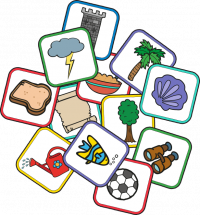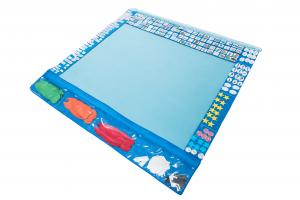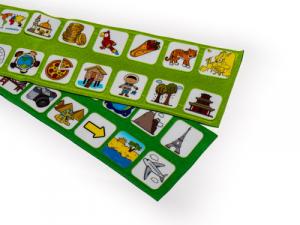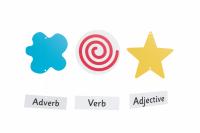Enhancing Key Stage One Oracy - Innovative Learning Strategies
Introduction
Oracy, the art of effective speaking and listening, is essential for developing literacy skills in early education; it empowers pupils to express their ideas clearly and contributes significantly to their overall learning experience.
 In today's dynamic classroom, interactive and tactile tools play a crucial role in enhancing this vital skill, demonstrating that learning can be both fun and engaging. This blog aims to explore innovative methods that harness these tools to improve oracy in Key Stage One settings.
In today's dynamic classroom, interactive and tactile tools play a crucial role in enhancing this vital skill, demonstrating that learning can be both fun and engaging. This blog aims to explore innovative methods that harness these tools to improve oracy in Key Stage One settings.
This blog will delve into the importance of oracy, the benefits of interactive learning, and practical strategies for teachers to adopt in their classrooms; each section illuminates a different aspect of how oral communication supports literacy development.
The Importance of Oracy in Key Stage One Literacy
Oracy is the ability to express oneself fluently and comprehend spoken language, and it is pivotal in building a strong foundation for literacy; it encompasses pronunciation, vocabulary, grammar, and the capacity for critical listening. Effective oracy skills enable pupils to participate actively in classroom discussions and contribute to a vibrant learning environment. This skill set not only underpins written communication but also enriches overall academic performance.
This skill set not only underpins written communication but also enriches overall academic performance.
Strong oral skills contribute significantly to a child's confidence and communication abilities, offering them the tools to articulate their thoughts with clarity. Enhanced oracy leads to improved collaboration, better understanding of subject matter and a more dynamic classroom discussion, ultimately leading to higher engagement and self-esteem.
Interactive and Tactile Learning Tools to Enhance Oracy
Interactive and tactile learning tools offer a hands-on approach that brings abstract language concepts to life, making the learning process both captivating and accessible; these resources invite children to engage directly with the material and to internalise language structures through play. Such tools create a multi-sensory experience that complements traditional teaching methods, ensuring that pupils are involved in every phase of their learning journey.

Tactile resources, like the versatile Mighty Writer mat and its accompanying sentence clouds, allow children to physically construct sentences, helping them grasp grammatical concepts more intuitively. The interactive nature of these activities stimulates both visual and kinaesthetic learners, thereby catering to a wide range of individual needs within the classroom.
Boosting Children's Confidence Through Engaging Activities
Engaging activities in the classroom not only make learning enjoyable, but they also build a child's confidence in expressing themselves orally; fun and interactive activities create a positive association with learning that encourages active participation. When pupils are provided with opportunities to speak, share stories, and present ideas in a structured yet enjoyable setting, their self-esteem blossoms.
In practice, classrooms that integrate creative activities such as storytelling sessions, role-play and interactive group discussions witness a notable increase in pupils' willingness to speak up. Activities designed to engage the mind and foster confidence are crucial in developing both language skills and emotional resilience.
Structured Oral Practice for Improved Literacy
Structured oral practice involves planned activities that focus on building specific language skills through regular opportunities for discussion, sharing of ideas, developing vocabulary and sentence structure and speaking articulately and confidently.  By integrating routine oral drills and practice sessions, teachers can promote a developing vocabulary and awareness of sentence structure and facilitate a smooth transition from speech to writing.
By integrating routine oral drills and practice sessions, teachers can promote a developing vocabulary and awareness of sentence structure and facilitate a smooth transition from speech to writing.
Techniques such as guided storytelling, group discussion and recitation not only promote clarity of thought but also give pupils the confidence to articulate their ideas effectively. These exercises offer a systematic approach that bolsters both cognitive and linguistic skills.
Utilising the Mighty Writer Mat and Sentence Clouds
The Mighty Writer mat is a distinctive resource that utilises colourful image tiles, sentence clouds and velcro symbols to create an interactive learning environment; its design invites children to physically construct sentences, which aids in internalising language structures. The vibrant elements of the resource draw learners into the activity, making each session a visual and tactile experience designed to stimulate engagement.
Teachers can easily integrate this resource into their lesson plans, using it to support storytelling, promote and develop awareness of vocabulary and language choices and to challenge pupils to experiment with different sentence structures. The combination of visual cues and tactile interaction ensures that every child can participate, regardless of their preferred learning style.
Easy-to-Implement Strategies for Teachers
Simple classroom strategies can yield significant improvements in pupils oracy and literacy skills, making it easy for teachers to integrate new methods without overwhelming their existing curriculum. Techniques such as incorporating brief spoken exercises, using interactive tools and scheduling regular discussion sessions offer immediate benefits that can be observed within weeks.
In addition to these practical methods, teachers are encouraged to utilise available resources such as detailed guides and CPD training sessions for Mighty Writer which provide further insights and support. The strategies are designed for immediate classroom adoption, ensuring that every teacher can start improving language skills from day one.
The Mighty Writer Guide: What it is and what it does
Fostering an Inclusive Learning Environment
Creating an inclusive classroom is paramount to ensuring that every child feels valued and is given the opportunity to contribute; a truly inclusive environment listens to every voice, regardless of ability or background. Such a space promotes not only the development of language skills but also fosters mutual respect and understanding among pupils, forming the bedrock of a progressive learning atmosphere.
Teachers can adapt lessons to cater for diverse needs by incorporating a variety of oral exercises and ensuring that activities are accessible to SEN pupils and those learning English as an additional language. By designing lessons that are flexible and responsive, teachers can create a supportive atmosphere that nurtures every child's ability.
Conclusion
In summary, enhancing oracy in Key Stage One through interactive and tactile learning tools is a highly effective strategy for improving overall literacy. This blog has explored key elements including the benefits of structured oral practice, engaging activities and the utilisation of innovative resources such as the Mighty Writer mat.
Teachers are encouraged to adopt these easy-to-implement strategies and to embrace the power of interactive learning, knowing that every step taken to enhance oracy contributes to a richer, more confident classroom environment. By fostering an inclusive and dynamic setting, educators can help every child find their voice and excel in literacy.




